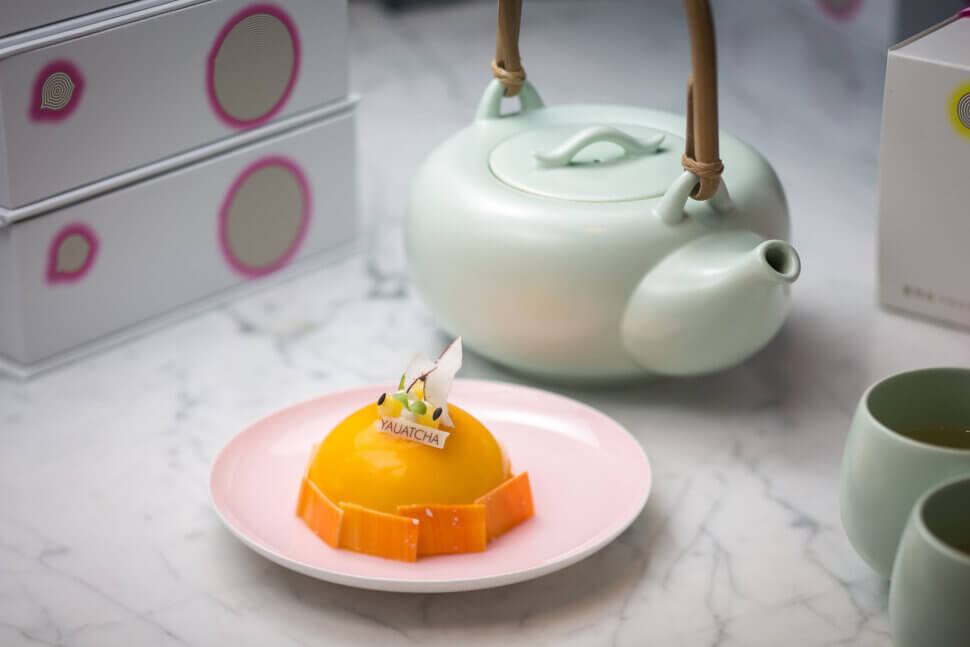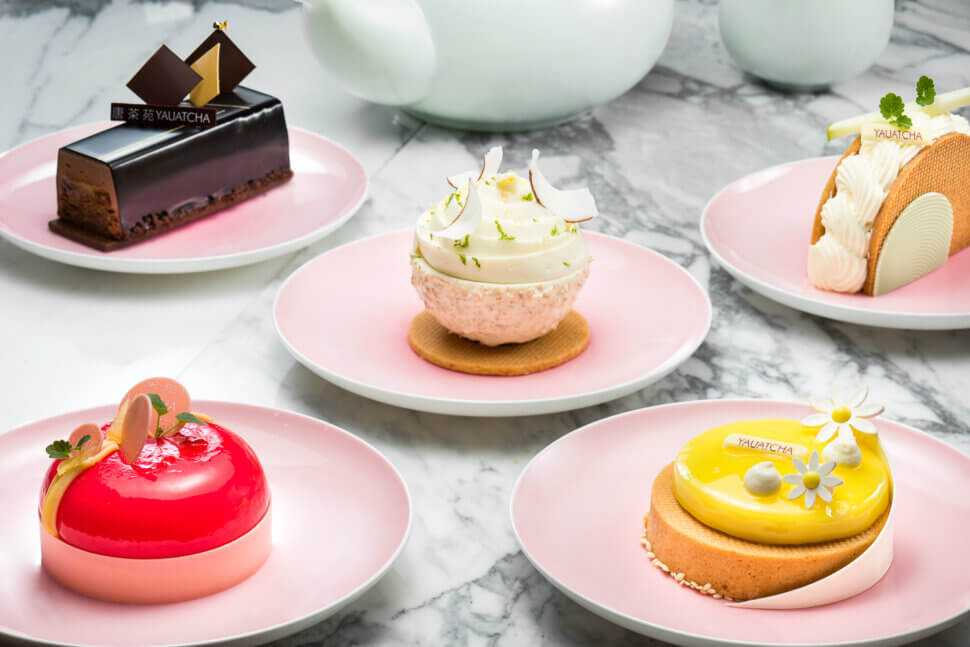How to Create Patisserie with Chinese Food in Mind
November 3, 2020
Chinese cuisine is notoriously flavoursome. The dishes often include bold ingredients such as chilli and garlic that dominate the palate, assault the taste buds, and linger long after they’ve been eaten. In order to create a dessert that can both stand-alone and successfully follow a dish containing a lot of spices, it must have a number of different characteristics: perhaps most importantly, it must be light, it mustn’t be overly sweet, and it must have a good balance of flavours. Executive Head Chef Graham Hornigold and the pastry team take these characteristics in mind when creating and developing the desserts for Yauatcha.
THE PATISSERIE SHOULD CLEANSE THE PALATE
A palate cleanser neutralises the taste buds, removing any existing flavours that may remain in the mouth, such as garlic or chilli. Often, acidic foods such as lemon are used as they increase the saliva in the mouth, essentially washing the taste buds clean of any residual tastes.
Chef Graham believes that it’s important for a dessert to have palate-cleansing properties, especially if it is eaten after a heavily spiced dish. Each of the petit gateau at Yauatcha includes flavours that naturally increase the saliva production in the mouth, washing all remnants of the previous course from the taste buds within a mouthful.

THE PATISSERIE SHOULD BE LIGHT
Dim sum is a meal consisting of multiple small plates, and naturally filling carbohydrates such as rice or noodles are often consumed. People order many plates, and eat until they are full. Because of this, it’s imperative that the desserts at Yauatcha are light. Many of the petit gateaux include aerated mousses, while others utilise the light, delicate flavours of citrus and berries.
THE PATISSERIE SHOULD EXCLUDE NON-ESSENTIAL INGREDIENTS
When creating desserts, Chef Graham explains that it’s important to exclude any non-essential ingredients. If a dessert includes ingredients that are unnecessary, it confuses the palate and becomes a chore to eat. If an ingredient doesn’t add something to the dish, either in texture or taste, then it is omitted.
The patisseries at the restaurant go through an extensive development phase: the dessert is first created by the pastry chef and tasted in the kitchen; it is then adapted and improved upon before it is tasted by Chef Graham. He will then suggest any additional improvements before it is taken to the restaurant managers for final approval. This process ensures that the cakes don’t include any unnecessary ingredients and have the correct balance of flavours to be good as they possibly can be.
THE PATISSERIE SHOULDN’T BE OVERSWEET
Sugar is a necessary ingredient – many elements of a dessert, such as meringue, need sugar in order to be made. However, Chef Graham’s philosophy is that too sweet desserts don’t satisfy the palate. In order to create a dessert that is not overly sweet, sugar needs to be omitted wherever possible. The pastry kitchen at the restaurant make all their own ingredients, such as nut pastes, ice creams and tart cases, in house, ensuring that no unknown salts or sugars is added which would eventually lead to the dessert being oversweet.

